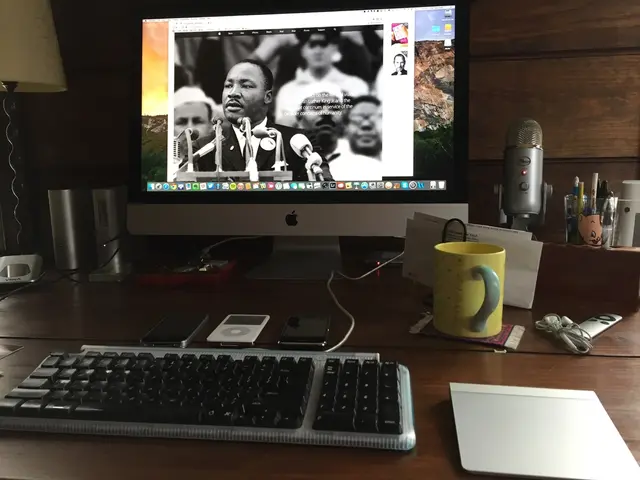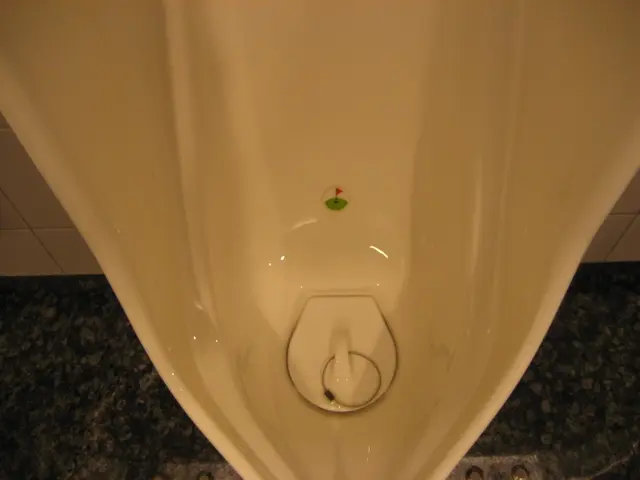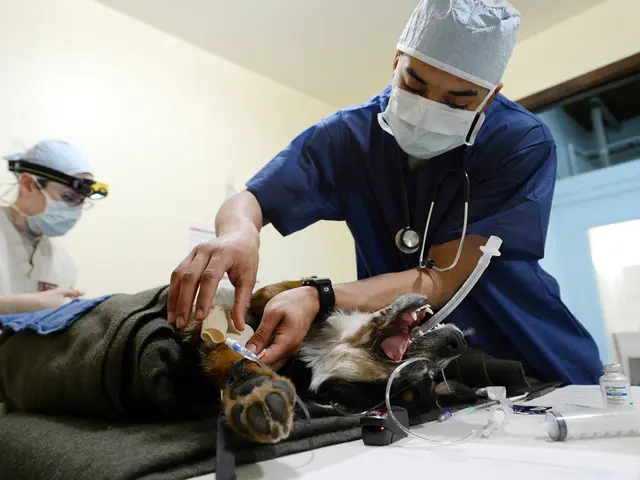Medicare's coverage for PureWick external catheters: a question explored?
** Managing Incontinence Made Easier: A Deep Dive into the PureWick System**
The struggle with managing incontinence just got a bit easier, thanks to the innovative PureWick system. Specifically designed for women, this system offers a solution for those dealing with incontinence while sleeping or resting.
The PureWick system comprises an external catheter that extends from the vulva to the buttocks, connecting to a tube leading to a collection container. This container can be placed conveniently on a nightstand or table[1].
A groundbreaking development in the world of healthcare, the PureWick system was granted coverage under Medicare in 2024, falling under the durable medical equipment (DME) benefit of Part B.
Let's talk about sex and gender for a moment. Sex and gender exist on a spectrum[2]. This article uses terms such as "male," "female," or both to refer to sex assigned at birth. Learn more about the complexities involved in these topics.
When does Medicare Cover PureWick External Catheters?
Medicare Part B provides coverage for DME, which includes essential medical items such as oxygen supplies, walkers, and hospital beds. As long as a Medicare-enrolled doctor or healthcare professional prescribes a qualifying device for home use, a Medicare-enrolled person can avail it[3].
DME can include external catheters as alternatives to indwelling catheters for individuals with permanent urinary incontinence. From 2024, Medicare has included the PureWick system in this coverage[4]. However, Medicare will not cover the system if an individual already has an indwelling catheter. Furthermore, for female catheters, Medicare limits usage to no more than one metal cup or pouch per week. In a hospital setting, catheters will be covered by Part A.
How Much Does Medicare Pay for PureWick?
According to the manufacturer's website, a box of 30 catheters costs around $209 without insurance[1]. By purchasing in bulk, one can save significantly.
In 2025, those enrolled in Medicare Part B must meet the annual deductible of $257 and pay a monthly premium of $185. Once these conditions are met, Part B will cover 80% of approved treatments or services[3].
With Part A, most people are exempt from paying a premium, but they must meet a deductible of $1,676. Afterward, Part A covers their hospital stay and any necessary medical devices during that period fully for the first 60 days[3].
Medicare Advantage (Part C) plans are private plans that must provide the same benefits as Original Medicare. The premiums, deductibles, and coinsurance vary depending on the plan.
Glossary of Medicare Terms
- Out-of-pocket cost: This is the amount a person must pay for care when Medicare does not pay the total amount or offer coverage. Costs can include deductibles, coinsurance, copayments, and premiums.
- Premium: This is the amount of money someone pays each month for Medicare coverage.
- Deductible: This is an annual amount a person must spend out of pocket within a certain period before Medicare starts to fund their treatments.
- Coinsurance: This is the percentage of treatment costs that a person must self-fund. For Medicare Part B, coinsurance is 20%.
- Copayment: This is a fixed dollar amount a person with insurance pays when receiving certain treatments. For Medicare, this usually applies to prescription drugs.
- The PureWick system, designed for managing incontinence, was granted coverage under Medicare Part B in 2024 as a durable medical equipment (DME) benefit.
- Medicare Part B covers essential medical items like the PureWick system, given a qualifying device is prescribed by a Medicare-enrolled doctor or healthcare professional for home use.
- From 2024, the PureWick system, including external catheters, is included in Medicare's DME coverage, except for individuals who already have indwelling catheters or use more than one metal cup or pouch per week for female catheters.
- Medicare Part B enrollees in 2025 are required to pay an annual deductible of $257 and a monthly premium of $185, after which they will have 80% of their approved treatments covered.
- PureWick external catheters are not covered by Medicare Part A in a home setting, but catheters may be covered during hospital stays under Part A.
- Annual out-of-pocket costs for PureWick catheters, depending on the quantity purchased, can range from $209 to a lower amount with bulk purchases, while the exact premium, deductible, and coinsurance for Medicare Advantage (Part C) plans depend on the selected plan.








